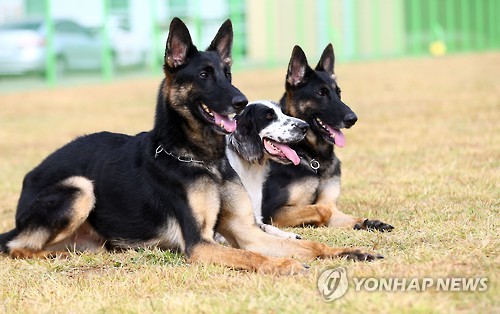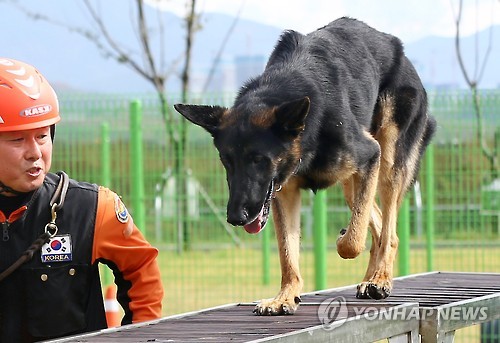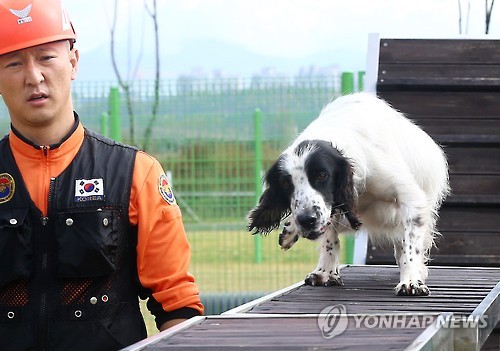
Dasol and Nara, dogs cloned by controversial researcher Hwang Woo-suk and his team, have been accepted into Korea’s rescue dog program. (Image : Yonhap)
SEOUL, Oct. 29 (Korea Bizwire) - Dasol and Nara, dogs cloned by controversial researcher Hwang Woo-suk and his team, have been accepted into Korea’s rescue dog program.
The National 119 Rescue Service of the Ministry of Public Safety and Security announced that Dasol and Nara have passed the official qualification tests for rescue dogs.
Seven dogs, including Nara, Nuri, and Dasol, three cloned dogs donated by Hwang to the Ministry of Public Safety and Security, applied for the test.

Nara and Nuri, male German Shepherds born in October 2012, were cloned from a watch dog. After failing the test once in April, Nara and Nuri challenged for the position again. (Image : Yonhap)
Nara and Nuri, male German Shepherds born in October 2012, were cloned from a watch dog. After failing the test once in April, Nara and Nuri challenged for the position again. Dasol, a male English springer spaniel born in February 2013, was cloned from Suan, a rescue dog at the Gyeonggi fire defense headquarters.

Dasol, a male English springer spaniel born in February 2013, was cloned from Suan, a rescue dog at the Gyeonggi fire defense headquarters. (Image : Yonhap)
Six out of the seven dogs that participated passed the test. Nuri, the only dog that failed, will take the test again at the next possible opportunity. The others that passed have been approved for field work.
It is assumed to be the first time in the world that cloned dogs enter service as rescue dogs. There isn’t much information on how long cloned dogs can live, or how their performance differs from normal dogs, as little research has been conducted on the matter abroad.
However, experts say that it will be difficult for the results achieved to receive recognition internationally. “Since the matter has not gone through academic verification, it will be difficult to gather attention. Besides, even if it is recognized, the credit goes to Hwang and his research center instead of the Ministry of Public Safety and Security, which invested the money to train the cloned dogs.”
In August 2005, Hwang announced in ‘Nature’, the prestigious science journal, that his team had succeeded in cloning an Afghan hound. This attracted worldwide attention, since cloning a dog is considered to be more difficult than cloning other mammals, and by cloning a dog, finding treatment for incurable diseases seemed possible. However, the thesis that was published in Science later turned out to have been based on manipulated results, and Hwang was fired from his job as a professor at the prestigious Seoul National University.
Considering that it usually takes 18 to 24 months and an investment of over 20 million won to train one rescue dog, experts suggest that the Ministry of Public Safety and Security collaborate with research centers to share the credit for the research.
Officials from the Ministry of Public Safety and Security say that they have trained a dog cloned by the Rural Development Administration, but the dog had to give up because of joint pathologies that developed later on. However, the ministry still plans to continue collaboration with the Rural Development Administration.
By Francine Jung (francine.jung@kobizmedia.co.kr)






